
Want to create or adapt books like this? Learn more about how Pressbooks supports open publishing practices.
Chapter 14. Back to the Big Picture: Globalization and Trends

14.1 Globalization and the Tourism Industry

In today’s integrated and interdependent world, multiple forces represent both opportunities and threats to tourism. This chapter explores the topic of globalization and how it relates to tourism, and then examines trends (political, economic, social, technological, legal and environmental influences — PESTLE ). The chapter closes with a reflection on what all this means for tourism in British Columbia.
Depending on the focus of the discussion, globalization can be defined in several ways. One broad definition is:
A complex web of social processes that intensify and expand worldwide economic, cultural, political and technological exchanges and connections (Campbell, MacKinnon, & Stevens, 2011, p. 4).
Globalization can also be simply described as the movement of goods, ideas, values, and people around the world. The term was first used in the early 1950s to recognize the increasing interdependence of economies and societies around the world. Globalization, however, has existed for centuries by way of evolving trade routes, including the slave trade, colonization, and immigration.
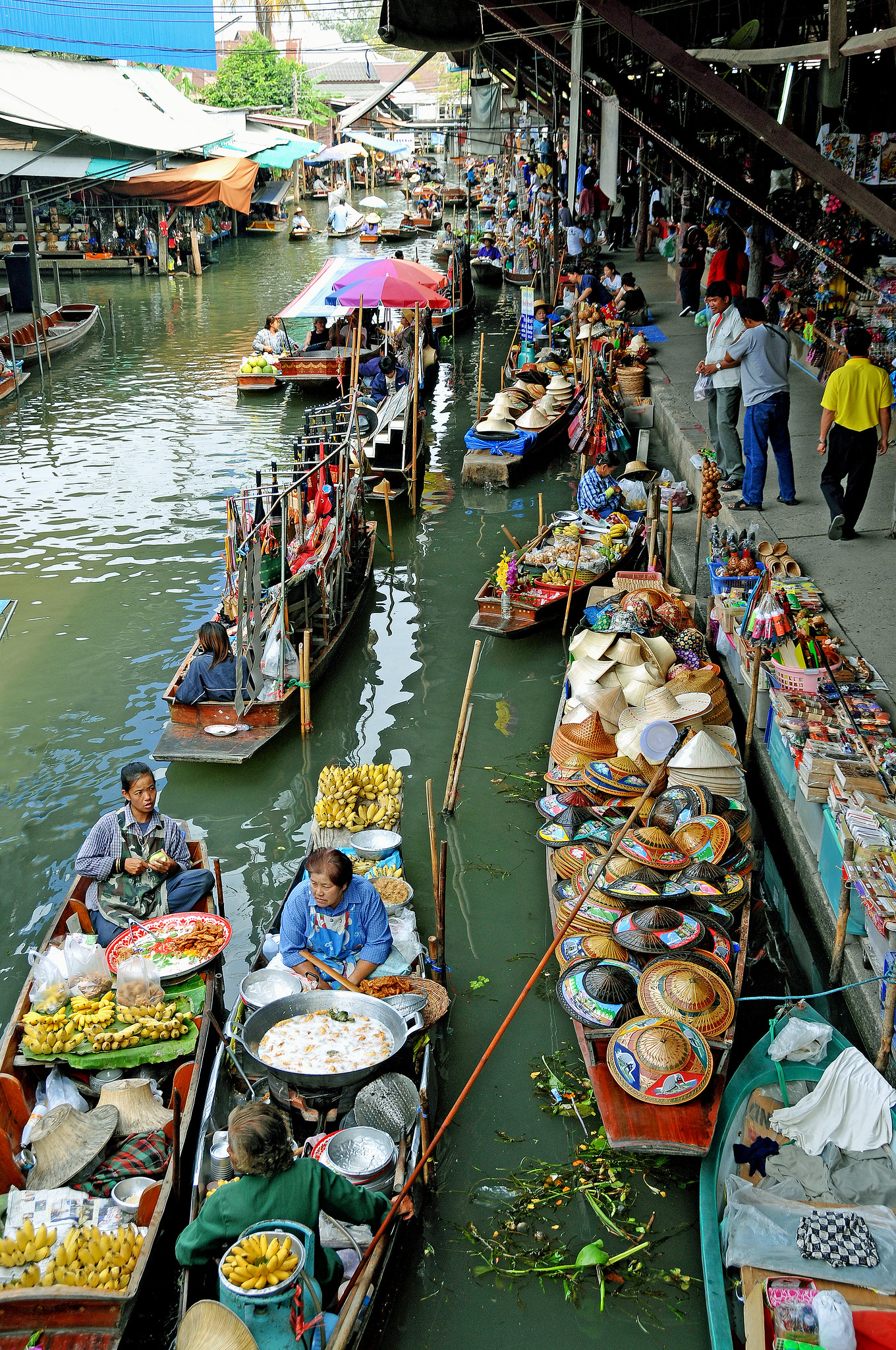
Today, we are divided into separate countries, each looking out for its own national self-interest, with all its flaws and benefits. At the same time, other entities such as multinational corporations cross borders, which leads to global economic and political integration. Many benefits can result from global integration and interdependence, but we also need to heed its negative effects.
We can look at the relationship between globalization and tourism in several ways. For the purposes of this chapter, we will consider the impact of tourism and travel on globalization, and the impact of globalization on tourism. But first, let’s keep in mind why it is important for a local tour operator, general manager, or tourism business owner to think about globalization. More importantly, let’s consider where we should be looking to understand globalization and future trends. The rest of this chapter will address these topics.
The Impact of Globalization on Tourism
We can assess the impact of globalization on tourism from a number of perspectives. Here, we will discuss five examples: global mobility and ease of travel; population and demographic trends; terrorism, safety, and security; increased awareness of new destinations; and poverty.
Global Mobility and Ease of Travel
The advances made in transportation that have enabled global mobility are particularly significant. Modern aircraft, cruise ships, trains, and other modes of transport allow people to move quickly and relatively cheaply. Aircraft such as the Boeing 787 Dreamliner have opened new routes by creating an aircraft capable of flying “long haul” distances with a smaller passenger load. Fast trains, road systems, and even city bike rental programs enable people to move, tour, and explore the world. These changes have allowed more people to travel more often in less time.

Ease of travel has also helped to overcome the barriers of fear, frustration, and expense. For example, an international banking system allows access to money almost anywhere in the world. Multinational corporations, which provide flights, local transportation, and accommodation and food, have allowed for “one-stop shopping” for travel bookings. Mobile devices have also changed the nature of travel in terms of what travellers do and how they interact with a destination, making it easier to, for example, select a restaurant, navigate a big city, or translate a foreign language. As a result, there are fewer unexplored places in the world anymore.
The ease of travel has also facilitated the rapid global transfer of viruses. While spread owing to global air travel has occurred in other outbreaks such as SARS in 2003, the COVID-19 pandemic of 2020 illustrates the new challenges faced by the air transportation system. The willingness for quick action to contain future viruses means that airlines will need to be ready, willing and able to terminate travel routes upon any notice of health concerns.
Population and Demographic Trends
According to the United Nations Department of Economic and Social Affairs (2019a), the world population reached 7.7 billion in 2019 and is projected to exceed 9.7 billion by 2050. The population continues to increase, but not uniformly across the world. The overall global population rate of increase is slowing but birth and death rates are vastly different between developed and developing nations (UNDESA, 2019b). For instance, among developed countries, there is a growing percentage of people over 65 that will reach 25% by 2050 (UNDESA 2019a). With a smaller percentage engaged in the workforce, there will be implications on social and health services. Globally, the people under the age of 24 will decline in every region of the world. Among developing countries, half the global growth between 2019 and 2050 will come from Sub-Saharan Africa. For instance, Nigeria will double its population to 4 million by 2050 (UNDESA 2019b). The two most populous countries, India and China will also experience different trajectories; India will surpass China as the most populous country in the world by 2027 (UNDESA 2019b).
Other critical population trends affecting global development and tourism include the following (UNDESA 2019c; UNDESA 2019d):
- By 2100, approximately 40% of the world’s total population is expected to be African. While birth rates are tending to fall around the world, they are still higher across Africa than in most other parts of the globe. This could result in a youth dividend or further exacerbate problems on the African continent.
- More people are migrating than ever before, with 272 million recent migrants in 2019 alone compared with about 175 million in 2000. The top five destinations are the United States, Germany, the Russian Federation, Saudi Arabia, and the United Kingdom.
- Some 55% of the global population is urban, and the urbanization trend is expected to continue as people search for more jobs, more social and health services, and more activities. Not everyone benefits equally though, as housing and other infrastructure struggles to keep up with the growing urban population.
To keep up with all of these changes in demographics, destinations will need to provide products and services to suit the older, culturally diverse, multi-generational travellers as well as the adventurous youth. Additionally, hiring and retaining staff will require a rethinking of human resource policies and procedures, compensation, and other aspects for the changing population of employees.
Terrorism, Safety, and Security
Terrorist attacks and political unrest globally have certainly disrupted tourism, but not halted it. The areas most affected, of course, are those where unrest has occurred and has been the focus of extensive media attention. A global terrorism index produced by the Institute of Economics and Peace (2019) shows that while fatalities from terrorism have declined since 2015, the number of affected countries, 71, is the highest since 2002. Of note is the rise in far-right terrorism in western countries, with an increase of 320% over the past five years (p. 4).
The 2020 global pandemic for COVID-19 resulted in a massive and sudden transformation in the relationship between safety and travel. Starting in early March, 2020, the Canadian government moved toward closing the borders and curtailing outbound and inbound travel. These efforts were to, at first, contain the spread of the virus internationally, evolving toward a national quarantine to “flatten the curve” of number of people effected. Clearly, the pandemic has changed how we travel, and how we define safety of travel in a global setting.
While safety and security may not be the driving reasons for tourists selecting a particular destination, certainly a lack of safety and security often eliminates a location from travellers’ “wish lists.” Safety and security for travellers is becoming more important as countries move to protect their citizens. Government agencies around the world produce advisories and warnings for their citizens to stay away from dangerous locations and political unrest.
Take a Closer Look: Travel Advisories
Travel advisories serve as warning systems for people from specific countries to avoid particular destinations because of actual or potential threats to citizens. To learn more about advisories for specific countries, see the Canadian government web page at Canada’s Travel Advisories and compare them to Australia’s Travel Advisories , the United States’ Travel Advisories , and the United Kingdom’s Travel Advisories .
The focus on safety and security has had several impacts on travellers. Most notably, security at most airports has been increased in an effort to protect people and planes (Flight Global, 2015). Screening procedures can take longer and some items are no longer allowed on board. Other security requirements, such as showing passports and providing fingerprints, have been implemented for entry into some countries. While all acts of terrorism cannot be stopped, the tourism industry is attempting to provide as much safety and security as it can.
Increased Awareness of New Destinations
Another influence of globalization on tourism is a greater awareness of destinations and the range of leisure activities, sites, and cultures to visit around the world. Generating knowledge of a destination is obviously a key first step in marketing a destination, and this is achieved by way of travel shows, films, social media, and other forms of communication. The competition to attract visitors is fierce considering the sheer number of places available for travel; it can be easy to get lost in the noise of global competition.

Globalization has contributed to increased demand for goods and services and overall economic growth, with the result of global poverty having decreased over the years. However, at the same time, the gap between the richest and poorest has expanded. A significant portion of the world’s population is simply unable to participate in, or benefit from, tourism. The economic gains from a tourism economy in a developing country such as Honduras versus a developed country such as Canada is unequal. Simply put, not everyone has the same opportunities to profit. Environmental costs are also unevenly distributed in the world, with poor countries lacking the resources to adapt to impacts (such as droughts, increased disease, soil erosion), and shouldering the majority of the repercussions of phenomena such as global warming.
Another way to analyze the interplay between tourism and globalization is to consider the reverse view: the impact of tourism on globalization.
Impact of Tourism on Globalization
In this section, we will look at tourism as a global force — for peace, for cultural homogenization, for commodifying cultures, and for shaping the way we see the world.
Tourism as a Force for Peace
In the 1980s, a popular hypothesis was that tourism supported global peace by allowing travellers to learn about other cultures and meet people from other nations, as well as offering benefits accrued from international business. Peace is an obvious requirement for tourism if the industry is to be robust and sustainable. However, to date, there is little empirical evidence to support the claim that tourism fosters peace, however attractive as the idea may be. However, there is a growing body of research on the relationship between tourism, social justice, and human security, both negative and positive. Clearly, the simple presence of tourism does not immediately equate to societal benefit. Careful planning and a focus on policies supporting community well-being and sustainability are required.
The United Nations Sustainable Development Goals (SDGs) are important for tourism organizations to take into account. They help in guiding the evolution of tourism and travel toward a more positive and hopeful form of tourism as well as enabling a more sustainable, and peaceful, future.
Tourism as Cultural Homogenizer

Nevertheless, tourism does offer the opportunity to teach people about how to respect other cultures. Whereas some argue that globalization has a homogenizing effect on cultures, as Western values are spread through music, fashion, film, and food, rendering one culture indistinguishable from the next. But tourism cannot be viewed as the only means of transmitting western values.
Some beliefs and values, such as embracing equality, inclusion, and diversity, or the need to protect children from harm, should be shared around the world. In the context of tourism and travel, these values are significant. For instance, companies need to ensure that their human resource practices are consistent and fair throughout the world. Exploiting children for sex is illegal, punishable in both the country visited and the home country of the tourist; some airlines and hotels are actively involved in supporting the prohibition of child sex tourism. Travellers are expected not to deface heritage sites or take rare or endangered natural or cultural objects as souvenirs. Such regulations speak to the universality of certain values and beliefs, which we all are required to follow as global citizens.
Tourism as Commodifier

Another possible influence of tourism on globalization is the process of cultural commodification , which refers to the drive toward putting a monetary value on every aspect of culture, from buying a sculpture stolen from an ancient temple, to buying endangered objects such as ivory and coral, or buying a T-shirt that desecrates a symbol or object important to another culture. This trend results in the degradation or devaluing of cultural values and beliefs and was explored in Chapter 12 on Indigenous tourism.
As one of the world’s largest industries, tourism impacts local, regional, and global economies. Resorts dot coastlines around the world and offer a welcome respite from colder climates to anyone wishing to experience a tropical beach, as well as the local culture and nature. While benefit comes to the community in the form of jobs, more often than not the larger share of the wealth leaks offshore. In response, local entrepreneurs and aid organizations have helped with initiatives that embrace local ownership in order for the wealth generated from tourism to stay in country . Community-based tourism, responsible tourism, and social entrepreneurship all aim to bring greater benefit to local communities.
Tourism As a World View
Tourism is also a major influence in how we see and understand the world. Keith Hollinshead (2019) refers to it as tourism world-making , or the way in which a place or culture is marketed and/or presented to tourists. Unlike local people, travellers experience a place for a few days, with limited knowledge of the culture and local way of life. Some visitors rely on available tourist information to make the most of the experience and to see the highlights. Others turn away and attempt to “go local” in search of the authentic experience with the belief that they can truly understand a place by avoiding the tourist sites.

If tourists stay in their resort in a given country, their only interaction with a local culture may be the staff at the hotel. In many cases, visitors experience a place in a fragmented, disconnected way, seeing only a portion of a place. How much can be gained from such short and transient experiences? This debate leads to one of the often discussed, if not hotly debated, topics in tourism, that of authenticity of experience . In 1976, Dean MacCannell released his book The Tourist: A New Theory of the Leisure Class , in which he argued that even those events that seem to be authentic are in some way staged for the visitor.
Take a Closer Look: Cannibal Tours
In 1988, Dean O’Rourke shot a documentary profiling the experiences of jet-set travellers as they encountered locals in Papua New Guinea. The movie highlights the challenges that happen when visitors meet with “the other,” in that their expectations shape the behaviours of the locals. The movie features interviews with the locals as well as tourists. Watch the movie Cannibal Tours .
As a quick review before leaving here, drag the following factors to the correct description between globalization and tourism.
Now let’s look at some predominant trends in the industry.
An acronym for political, economic, social, technological, legal and environmental forces.
The movement of goods, ideas, values, and people around the world.
Making the same, i.e., the effect of tourism helping to spread Western values, rendering one culture indistinguishable from the next.
The drive toward putting a monetary value on aspects of a culture.
A term to describe using a local-ownership approach in order for the wealth generated from tourism to stay in a destination.
The way in which a place or culture is marketed and/or presented to tourists.
A hot topic in tourism that started with MacCannell in 1976 and continues to today; discussion of the extent to which experiences are staged for visitors.
Introduction to Tourism and Hospitality in BC - 2nd Edition Copyright © 2015, 2020, 2021 by Morgan Westcott and Wendy Anderson, Eds is licensed under a Creative Commons Attribution 4.0 International License , except where otherwise noted.
Share This Book
The effect of globalization on the tourism industry
Lena Linetti

Globalization and tourism are very dependent on each other. Today, thanks to globalization, people from across the world can easily exchange ideas and values whether they are political, environmental, technological, cultural, or economic settings. Consequently, this exchange has enabled the circulation of massive knowledge amongst the people of the world. People now understand each other better regardless of language, religion, or cultural differences and this has boosted tourism in a huge way.
One of the greatest barriers to the growth of the global tourism industry is political misunderstanding amongst different territories. And apparently, the same barrier has hindered globalization for over five decades now. But the good thing is that citizens from different countries are now exiting from their racial, tribal, religious, and political cocoons and embracing humanity. Many people are continuously realizing the great potential that lies in pulling together as people instead of antagonizing each other for imaginary conflicts. This trend has really helped both globalization and tourism.
In the realization of how powerful globalization is, nearly all countries on the planet are working hard to open up their borders for international investors. This has even forced neighboring countries to form trade blocs in order to enhance the free flow of goods and ideas within the region. The social media, on the other hand, has made it easy for aspiring travelers and business people to acquire information about different destinations and markets, consequently aiding the growth of globalization and the tourism industries. What’s more, affordable accommodation options such as vacation rentals have greatly increased across the world in order to accommodate the growing number of international visitors.
An Example of How Globalization Has Affected Tourism
Years back, East Asia was a sleeping economic giant. This has since changed due to globalization. Economies such as China, Japan, and India have grown tremendously in the recent past. These countries boast of a huge working population, particularly in the tech industry. In fact, companies in the traditional economic powerhouses are now outsourcing cheap labor to Asia and some parts of Africa. This has led to a continuous flow of money between citizens of different continents.
The growth of ICT in East Asia, on the other hand, has made it easier and cheaper to do business in the region. Many countries in the west are even competing to make China and Malaysia their close trading allies. They are finding ways of doing business without being physical with the help of different PEO-s (Professional Employer Organization). A good PEO example would be NH Global Partners . This has led to the creation of more jobs and growth of income in the East, not forgetting a growing upper-middle class in the region. Hospitals, road networks, and other economic drivers are also improving by the day.
According to research , demographic shifts due to globalization greatly affect tourism as an industry. The higher the employment rate and average income index a country have, the higher the number of travelers it produces. Today, different tourists attraction sites across the world are seeing more Chinese, Japanese, and other Asian tourists more than ever before. Why so? Because they now have the resources to travel, plus the fact that most Asian employees get many paid leaves nowadays.
4 Other Ways that Globalization Has Affected the Tourism Industry
Positive effects
1. Increased global mobility
Globalization has made it easier to travel the world. There are cheaper flights, interpreting companies are opening offices everywhere, there are international credit card companies across the world, and changing currencies is easier and more convenient than during any other time in history. This has aided tourism in a big way.
2. Free flow of information
Globalization has made it easy for travel enthusiasts to discover hidden travel destinations and to learn about different cultures before making their traveling decisions. There are more senior citizens in the developed countries today and due to the increased circulation of information, this non-working population is making more international trips than ever before.
Negative effects
1. Terrorism
Increased globalization comes with some negatives too. Terror groups such as Boko Haram, ISIS, and Al-Qaeda are able to send their terror messages easily and faster thanks to social media. Deaths resulting from terrorism are also on the rise because globalization has made it easier for weapons and criminals to move freely between different countries. This hurts tourism in a big way.
2. Culture erosion
The richness of a given culture determines whether or not visitors will be attracted to it. But with globalization sweeping across continents, many people are losing their cultures and adapting to foreign traditions. This is killing the tourism sector.

- school Campus Bookshelves
- menu_book Bookshelves
- perm_media Learning Objects
- login Login
- how_to_reg Request Instructor Account
- hub Instructor Commons
- Download Page (PDF)
- Download Full Book (PDF)
- Periodic Table
- Physics Constants
- Scientific Calculator
- Reference & Cite
- Tools expand_more
- Readability
selected template will load here
This action is not available.

14.1: Globalization and the Tourism Industry
- Last updated
- Save as PDF
- Page ID 9381

- Morgan Westcott & Wendy Anderson et al.

In today’s integrated and interdependent world, multiple forces represent both opportunities and threats to tourism. This chapter explores the topic of globalization and how it relates to tourism, and then examines trends (political, economic, social, technological, legal and environmental influences — PESTLE). The chapter closes with a reflection on what all this means for tourism in British Columbia.
Depending on the focus of the discussion, globalization can be defined in several ways. One broad definition is:
A complex web of social processes that intensify and expand worldwide economic, cultural, political and technological exchanges and connections (Campbell, MacKinnon, & Stevens, 2011, p. 4).
Globalization can also be simply described as the movement of goods, ideas, values, and people around the world. The term was first used in the early 1950s to recognize the increasing interdependence of economies and societies around the world. Globalization, however, has existed for centuries by way of evolving trade routes, including the slave trade, colonization, and immigration.
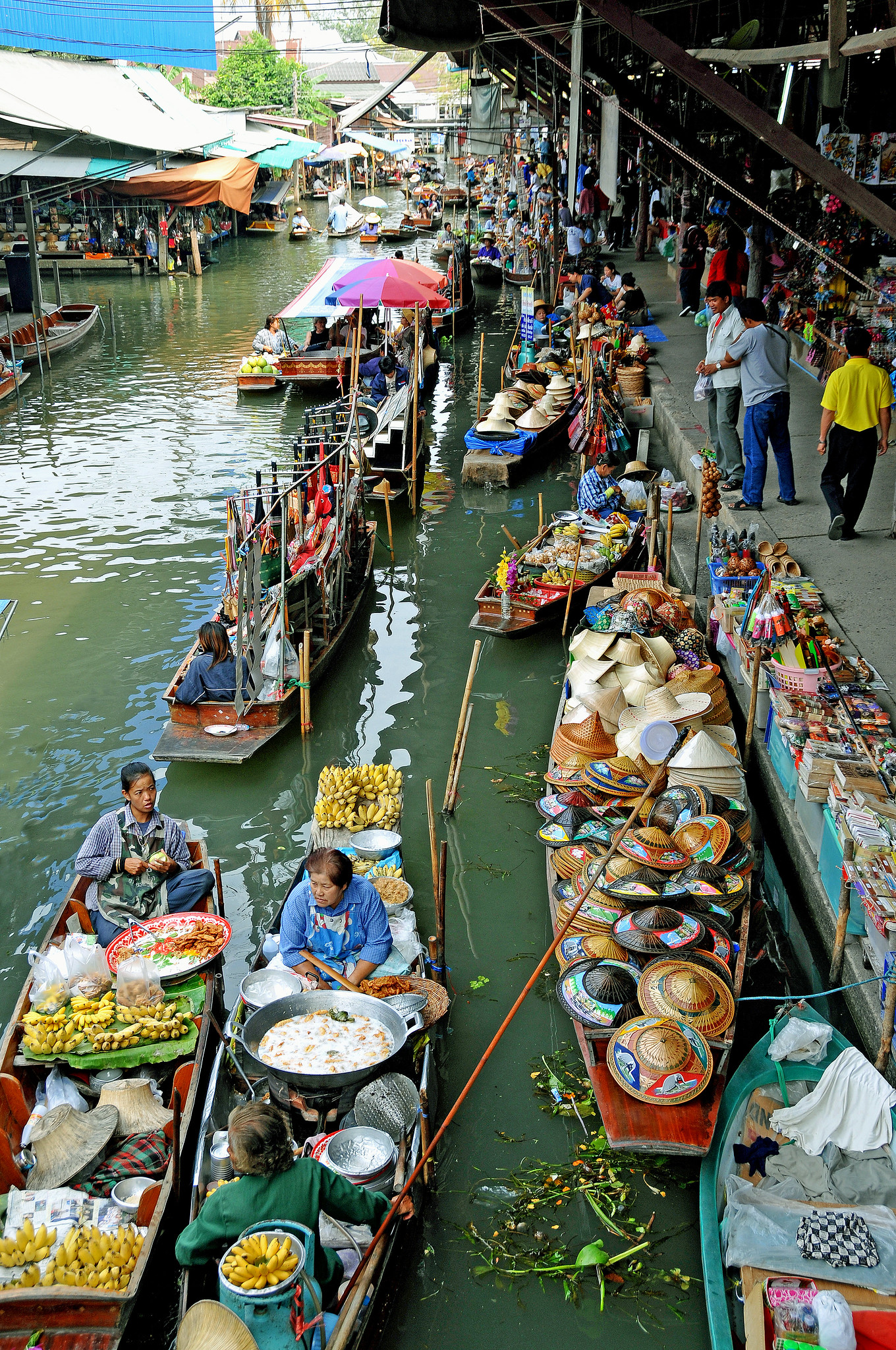
Today, we are divided into separate countries, each looking out for its own national self-interest, with all its flaws and benefits. At the same time, other entities such as multinational corporations cross borders, which leads to global economic and political integration. Many benefits can result from global integration and interdependence, but we also need to heed its negative effects.
We can look at the relationship between globalization and tourism in several ways. For the purposes of this chapter, we will consider the impact of tourism and travel on globalization, and the impact of globalization on tourism. But first, let’s keep in mind why it is important for a local tour operator, general manager, or tourism business owner to think about globalization. More importantly, let’s consider where we should be looking to understand globalization and future trends. The rest of this chapter will address these topics.
The Impact of Globalization on Tourism
We can assess the impact of globalization on tourism from a number of perspectives. Here, we will discuss five examples: global mobility and ease of travel; population and demographic trends; terrorism, safety, and security; increased awareness of new destinations; and poverty.
Global Mobility and Ease of Travel
The advances made in transportation that have enabled global mobility are particularly significant. Modern aircraft, cruise ships, trains, and other modes of transport allow people to move quickly and relatively cheaply. Aircraft such as the Boeing 787 Dreamliner have opened new routes by creating an aircraft capable of flying “long haul” distances with a smaller passenger load. Fast trains, road systems, and even city bike rental programs enable people to move, tour, and explore the world. These changes have allowed more people to travel more often in less time.

Ease of travel has also helped to overcome the barriers of fear, frustration, and expense. For example, an international banking system allows access to money almost anywhere in the world. Multinational corporations, which provide flights, local transportation, and accommodation and food, have allowed for “one-stop shopping” for travel bookings. Mobile devices have also changed the nature of travel in terms of what travellers do and how they interact with a destination, making it easier to, for example, select a restaurant, navigate a big city, or translate a foreign language. As a result, there are fewer unexplored places in the world anymore.
The ease of travel has also facilitated the rapid global transfer of viruses. While spread owing to global air travel has occurred in other outbreaks such as SARS in 2003, the COVID-19 pandemic of 2020 illustrates the new challenges faced by the air transportation system. The willingness for quick action to contain future viruses means that airlines will need to be ready, willing and able to terminate travel routes upon any notice of health concerns.
Population and Demographic Trends
According to the United Nations Department of Economic and Social Affairs (2019a), the world population reached 7.7 billion in 2019 and is projected to exceed 9.7 billion by 2050. The population continues to increase, but not uniformly across the world. The overall global population rate of increase is slowing but birth and death rates are vastly different between developed and developing nations (UNDESA, 2019b). For instance, among developed countries, there is a growing percentage of people over 65 that will reach 25% by 2050 (UNDESA 2019a). With a smaller percentage engaged in the workforce, there will be implications on social and health services. Globally, the people under the age of 24 will decline in every region of the world. Among developing countries, half the global growth between 2019 and 2050 will come from Sub-Saharan Africa. For instance, Nigeria will double its population to 4 million by 2050 (UNDESA 2019b). The two most populous countries, India and China will also experience different trajectories; India will surpass China as the most populous country in the world by 2027 (UNDESA 2019b).
Other critical population trends affecting global development and tourism include the following (UNDESA 2019c; UNDESA 2019d):
- By 2100, approximately 40% of the world’s total population is expected to be African. While birth rates are tending to fall around the world, they are still higher across Africa than in most other parts of the globe. This could result in a youth dividend or further exacerbate problems on the African continent.
- More people are migrating than ever before, with 272 million recent migrants in 2019 alone compared with about 175 million in 2000. The top five destinations are the United States, Germany, the Russian Federation, Saudi Arabia, and the United Kingdom.
- Some 55% of the global population is urban, and the urbanization trend is expected to continue as people search for more jobs, more social and health services, and more activities. Not everyone benefits equally though, as housing and other infrastructure struggles to keep up with the growing urban population.
To keep up with all of these changes in demographics, destinations will need to provide products and services to suit the older, culturally diverse, multi-generational travellers as well as the adventurous youth. Additionally, hiring and retaining staff will require a rethinking of human resource policies and procedures, compensation, and other aspects for the changing population of employees.
Terrorism, Safety, and Security
Terrorist attacks and political unrest globally have certainly disrupted tourism, but not halted it. The areas most affected, of course, are those where unrest has occurred and has been the focu s of extensive media attention. A g lobal terrorism index produced by the Institute of Economics and Peace (2019) shows that while fatalities from terrorism have declined since 2015, the number of affected countries, 71, is the highest since 2002. Of note is the rise in far-right terrorism in western countries, with an increase of 320% over the past five years (p. 4).
The 2020 global pandemic for COVID-19 resulted in a massive and sudden transformation in the relationship between safety and travel. Starting in early March, 2020, the Canadian government moved toward closing the borders and curtailing outbound and inbound travel. These efforts were to, at first, contain the spread of the virus internationally, evolving toward a national quarantine to “flatten the curve” of number of people effected. Clearly, the pandemic has changed how we travel, and how we define safety of travel in a global setting.
While safety and security may not be the driving reasons for tourists selecting a particular destination, certainly a lack of safety and security often eliminates a location from travellers’ “wish lists.” Safety and security for travellers is becoming more important as countries move to protect their citizens. Government agencies around the world produce advisories and warnings for their citizens to stay away from dangerous locations and political unrest.
Take a Closer Look: Travel Advisories
Travel advisories serve as warning systems for people from specific countries to avoid particular destinations because of actual or potential threats to citizens. To learn more about advisories for specific countries, see the Canadian government web page at Canada’s Travel Advisories and compare them to Australia’s Travel Advisories , the United States’ Travel Advisories , and the United Kingdom’s Travel Advisories .
The focus on safety and security has had several impacts on travellers. Most notably, security at most airports has been increased in an effort to protect people and planes (Flight Global, 2015). Screening procedures can take longer and some items are no longer allowed on board. Other security requirements, such as showing passports and providing fingerprints, have been implemented for entry into some countries. While all acts of terrorism cannot be stopped, the tourism industry is attempting to provide as much safety and security as it can.
Increased Awareness of New Destinations
Another influence of globalization on tourism is a greater awareness of destinations and the range of leisure activities, sites, and cultures to visit around the world. Generating knowledge of a destination is obviously a key first step in marketing a destination, and this is achieved by way of travel shows, films, social media, and other forms of communication. The competition to attract visitors is fierce considering the sheer number of places available for travel; it can be easy to get lost in the noise of global competition.

Globalization has contributed to increased demand for goods and services and overall economic growth, with the result of global poverty having decreased over the years. However, at the same time, the gap between the richest and poorest has expanded. A significant portion of the world’s population is simply unable to participate in, or benefit from, tourism. The economic gains from a tourism economy in a developing country such as Honduras versus a developed country such as Canada is unequal. Simply put, not everyone has the same opportunities to profit. Environmental costs are also unevenly distributed in the world, with poor countries lacking the resources to adapt to impacts (such as droughts, increased disease, soil erosion), and shouldering the majority of the repercussions of phenomena such as global warming.
Another way to analyze the interplay between tourism and globalization is to consider the reverse view: the impact of tourism on globalization.
Impact of Tourism on Globalization
In this section, we will look at tourism as a global force — for peace, for cultural homogenization, for commodifying cultures, and for shaping the way we see the world.
Tourism as a Force for Peace
In the 1980s, a popular hypothesis was that tourism supported global peace by allowing travellers to learn about other cultures and meet people from other nations, as well as offering benefits accrued from international business. Peace is an obvious requirement for tourism if the industry is to be robust and sustainable. However, to date, there is little empirical evidence to support the claim that tourism fosters peace, however attractive as the idea may be. However, there is a growing body of research on the relationship between tourism, social justice, and human security, both negative and positive. Clearly, the simple presence of tourism does not immediately equate to societal benefit. Careful planning and a focus on policies supporting community well-being and sustainability are required.
The United Nations Sustainable Development Goals (SDGs) are important for tourism organizations to take into account. They help in guiding the evolution of tourism and travel toward a more positive and hopeful form of tourism as well as enabling a more sustainable, and peaceful, future.
Tourism as Cultural Homogenizer

Nevertheless, tourism does offer the opportunity to teach people about how to respect other cultures. Whereas some argue that globalization has a homogenizing effect on cultures, as Western values are spread through music, fashion, film, and food, rendering one culture indistinguishable from the next. But tourism cannot be viewed as the only means of transmitting western values.
Some beliefs and values, such as embracing equality, inclusion, and diversity, or the need to protect children from harm, should be shared around the world. In the context of tourism and travel, these values are significant. For instance, companies need to ensure that their human resource practices are consistent and fair throughout the world. Exploiting children for sex is illegal, punishable in both the country visited and the home country of the tourist; some airlines and hotels are actively involved in supporting the prohibition of child sex tourism. Travellers are expected not to deface heritage sites or take rare or endangered natural or cultural objects as souvenirs. Such regulations speak to the universality of certain values and beliefs, which we all are required to follow as global citizens.
Tourism as Commodifier

Another possible influence of tourism on globalization is the process of cultural commodification, which refers to the drive toward putting a monetary value on every aspect of culture, from buying a sculpture stolen from an ancient temple, to buying endangered objects such as ivory and coral, or buying a T-shirt that desecrates a symbol or object important to another culture. This trend results in the degradation or devaluing of cultural values and beliefs and was explored in Chapter 12 on Indigenous tourism.
As one of the world’s largest industries, tourism impacts local, regional, and global economies. Resorts dot coastlines around the world and offer a welcome respite from colder climates to anyone wishing to experience a tropical beach, as well as the local culture and nature. While benefit comes to the community in the form of jobs, more often than not the larger share of the wealth leaks offshore. In response, local entrepreneurs and aid organizations have helped with initiatives that embrace local ownership in order for the wealth generated from tourism to stay in country. Community-based tourism, responsible tourism, and social entrepreneurship all aim to bring greater benefit to local communities.
Tourism As a World View
Tourism is also a major influence in how we see and understand the world. Keith Hollinshead (2019) refers to it as tourism world-making, or the way in which a place or culture is marketed and/or presented to tourists. Unlike local people, travellers experience a place for a few days, with limited knowledge of the culture and local way of life. Some visitors rely on available tourist information to make the most of the experience and to see the highlights. Others turn away and attempt to “go local” in search of the authentic experience with the belief that they can truly understand a place by avoiding the tourist sites.

If tourists stay in their resort in a given country, their only interaction with a local culture may be the staff at the hotel. In many cases, visitors experience a place in a fragmented, disconnected way, seeing only a portion of a place. How much can be gained from such short and transient experiences? This debate leads to one of the often discussed, if not hotly debated, topics in tourism, that of authenticity of experience. In 1976, Dean MacCannell released his book The Tourist: A New Theory of the Leisure Class , in which he argued that even those events that seem to be authentic are in some way staged for the visitor.
Take a Closer Look: Cannibal Tours
In 1988, Dean O’Rourke shot a documentary profiling the experiences of jet-set travellers as they encountered locals in Papua New Guinea. The movie highlights the challenges that happen when visitors meet with “the other,” in that their expectations shape the behaviours of the locals. The movie features interviews with the locals as well as tourists. Watch the movie Cannibal Tours .
Now let’s look at some predominant trends in the industry.
How global tourism can become more sustainable, inclusive and resilient

A sanitary mask lies on the ground at Frankfurt Airport Image: Reuters/Ralph Orlowski
.chakra .wef-1c7l3mo{-webkit-transition:all 0.15s ease-out;transition:all 0.15s ease-out;cursor:pointer;-webkit-text-decoration:none;text-decoration:none;outline:none;color:inherit;}.chakra .wef-1c7l3mo:hover,.chakra .wef-1c7l3mo[data-hover]{-webkit-text-decoration:underline;text-decoration:underline;}.chakra .wef-1c7l3mo:focus,.chakra .wef-1c7l3mo[data-focus]{box-shadow:0 0 0 3px rgba(168,203,251,0.5);} Ahmed Al-Khateeb

.chakra .wef-9dduvl{margin-top:16px;margin-bottom:16px;line-height:1.388;font-size:1.25rem;}@media screen and (min-width:56.5rem){.chakra .wef-9dduvl{font-size:1.125rem;}} Explore and monitor how .chakra .wef-15eoq1r{margin-top:16px;margin-bottom:16px;line-height:1.388;font-size:1.25rem;color:#F7DB5E;}@media screen and (min-width:56.5rem){.chakra .wef-15eoq1r{font-size:1.125rem;}} Travel and Tourism is affecting economies, industries and global issues

.chakra .wef-1nk5u5d{margin-top:16px;margin-bottom:16px;line-height:1.388;color:#2846F8;font-size:1.25rem;}@media screen and (min-width:56.5rem){.chakra .wef-1nk5u5d{font-size:1.125rem;}} Get involved with our crowdsourced digital platform to deliver impact at scale
Stay up to date:, travel and tourism.
- Tourism rose to the forefront of the global agenda in 2020, due to the devastating impact of COVID-19
- Recovery will be driven by technology and innovation – specifically seamless travel solutions, but it will be long, uneven and slow
- Success hinges on international coordination and collaboration across the public and private sectors
Tourism was one of the sectors hit hardest by the global pandemic. 2020 was the worst year on record for international travel due to the global pandemic, with countries taking decisive action to protect their citizens, closing borders and halting international travel.
The result was a 74% decline in international visitor arrivals, equivalent to over $1 trillion revenue losses , and an estimated 62 million fewer jobs . The impact on international air travel has been even more severe with a 90% drop on 2019 , resulting in a potential $1.8 trillion loss. And while the economic impact is dire in itself, nearly 2.9 million lives have been lost in the pandemic.
The path to recovery will be long and slow
Countries now face the challenge of reopening borders to resume travel and commerce, while protecting their populations’ health. At its peak, the World Tourism Organization (UNWTO) reported in April 2020 that every country on earth had implemented some travel restriction , signalling the magnitude of the operation to restart travel.
Have you read?
Tourism industry experts fear long road to recovery, how we can prioritize sustainability in rebuilding tourism, covid-19 could set the global tourism industry back 20 years.
Consequently, the path to recovery will be long and slow. The resurgence of cases following the discovery of new variants towards the end of last year delivered another disappointing blow to the travel industry. Any pickup over the summer months was quashed following a second wave of lockdowns and border closures . Coupled with mixed progress in the roll-out of vaccination programs, I predict that we will not see a significant rebound in international travel until the middle of this year at best.
Others echo my fears. The International Air Transport Association (IATA) forecasts a 50.4% improvement on 2020 air travel demand, which would bring the industry to 50.6% of 2019 levels . However, a more pessimistic outlook based on the persistence of travel restrictions suggests that demand may only pick up by 13% this year, leaving the industry at 38% of 2019 levels. McKinsey & Company similarly predict that tourism expenditure may not return to pre-COVID-19 levels until 2024 .
How to enhance sustainability, inclusivity and resilience
Given its economic might – employing 330 million people, contributing 10% to global GDP before the pandemic, and predicted to create 100 million new jobs – restoring the travel and tourism sector to a position of strength is the utmost priority.
The Great Reset provides an opportunity to rethink how tourism is delivered and to enhance sustainability, inclusivity and resilience. We must also address the challenges – from climate change and “ overtourism ” to capacity constraints – that we faced before the pandemic, while embracing traveller preferences, as we rebuild.
A 2018 study found that global tourism accounted for 8% of global greenhouse gas emissions from 2009 to 2013 ; four times higher than previous estimates. Even more worryingly, this puts progress towards the Paris Agreement at risk – recovery efforts must centre around environmental sustainability.
Furthermore, according to a study on managing overcrowding, the top 20 most popular global destinations were predicted to add more international arrivals than the rest of the world combined by 2020 . While COVID-19 will have disrupted this trend, it is well known that consumers want to travel again, and we must address the issues associated with overcrowding, especially in nascent destinations, like Saudi Arabia.
The Great Reset is a chance to make sure that as we rebuild, we do it better.

Seamless solutions lie at the heart of travel recovery
Tourism has the potential to be an engine of economic recovery provided we work collaboratively to adopt a common approach to a safe and secure reopening process – and conversations on this are already underway.
Through the G20, which Saudi Arabia hosted in 2020, our discussions focused on how to leverage technology and innovation in response to the crisis, as well as how to restore traveller confidence and improve the passenger experience in the future .
At the global level, across the public and private sectors, the World Economic Forum is working with the Commons Project on the CommonPass framework , which will allow individuals to access lab results and vaccination records, and consent to having that information used to validate their COVID status. IATA is trialling the Travel Pass with airlines and governments , which seeks to be a global and standardized solution to validate and authenticate all country regulations regarding COVID-19 travel requirements.
The provision of solutions that minimize person-to-person contact responds to consumer wants, with IATA finding that 85% of travellers would feel safer with touchless processing . Furthermore, 44% said they would share personal data to enable this, up from 30% months prior , showing a growing trend for contactless travel processes.
Such solutions will be critical in coordinating the opening of international borders in a way that is safe, seamless and secure, while giving tourists the confidence to travel again.
Collaboration at the international level is critical
The availability of vaccines will make this easier, and we have commenced our vaccination programme in Saudi Arabia . But we need to ensure processes and protocols are aligned globally, and that we support countries with limited access to vaccinations to eliminate the threat of another resurgence. It is only when businesses and travellers have confidence in the systems that the sector will flourish again.
In an era of unprecedented data and ubiquitous intelligence, it is essential that organizations reimagine how they manage personal data and digital identities. By empowering individuals and offering them ways to control their own data, user-centric digital identities enable trusted physical and digital interactions – from government services or e-payments to health credentials, safe mobility or employment.

The World Economic Forum curates the Platform for Good Digital Identity to advance global digital identity activities that are collaborative and put the user interest at the center.
The Forum convenes public-private digital identity collaborations from travel, health, financial services in a global action and learning network – to understand common challenges and capture solutions useful to support current and future coalitions. Additionally, industry-specific models such as Known Traveller Digital Identity or decentralized identity models show that digital identity solutions respecting the individual are possible.
The approach taken by Saudi Arabia and its partners to establish consensus and build collaborative relationships internationally and between the public and private sectors, should serve as a model to be replicated so that we can maximize the tourism sector’s contribution to the global economic recovery, while ensuring that it becomes a driver of prosperity and social progress again.
Don't miss any update on this topic
Create a free account and access your personalized content collection with our latest publications and analyses.
License and Republishing
World Economic Forum articles may be republished in accordance with the Creative Commons Attribution-NonCommercial-NoDerivatives 4.0 International Public License, and in accordance with our Terms of Use.
The views expressed in this article are those of the author alone and not the World Economic Forum.
Related topics:
The agenda .chakra .wef-n7bacu{margin-top:16px;margin-bottom:16px;line-height:1.388;font-weight:400;} weekly.
A weekly update of the most important issues driving the global agenda
.chakra .wef-1dtnjt5{display:-webkit-box;display:-webkit-flex;display:-ms-flexbox;display:flex;-webkit-align-items:center;-webkit-box-align:center;-ms-flex-align:center;align-items:center;-webkit-flex-wrap:wrap;-ms-flex-wrap:wrap;flex-wrap:wrap;} More on Travel and Tourism .chakra .wef-17xejub{-webkit-flex:1;-ms-flex:1;flex:1;justify-self:stretch;-webkit-align-self:stretch;-ms-flex-item-align:stretch;align-self:stretch;} .chakra .wef-nr1rr4{display:-webkit-inline-box;display:-webkit-inline-flex;display:-ms-inline-flexbox;display:inline-flex;white-space:normal;vertical-align:middle;text-transform:uppercase;font-size:0.75rem;border-radius:0.25rem;font-weight:700;-webkit-align-items:center;-webkit-box-align:center;-ms-flex-align:center;align-items:center;line-height:1.2;-webkit-letter-spacing:1.25px;-moz-letter-spacing:1.25px;-ms-letter-spacing:1.25px;letter-spacing:1.25px;background:none;padding:0px;color:#B3B3B3;-webkit-box-decoration-break:clone;box-decoration-break:clone;-webkit-box-decoration-break:clone;}@media screen and (min-width:37.5rem){.chakra .wef-nr1rr4{font-size:0.875rem;}}@media screen and (min-width:56.5rem){.chakra .wef-nr1rr4{font-size:1rem;}} See all

How Japan is attracting digital nomads to shape local economies and innovation
Naoko Tochibayashi and Naoko Kutty
March 28, 2024

Turning tourism into development: Mitigating risks and leveraging heritage assets
Abeer Al Akel and Maimunah Mohd Sharif
February 15, 2024

Buses are key to fuelling Indian women's economic success. Here's why
Priya Singh
February 8, 2024

These are the world’s most powerful passports to have in 2024
Thea de Gallier
January 31, 2024

These are the world’s 9 most powerful passports in 2024

South Korea is launching a special visa for K-pop lovers
UN Tourism | Bringing the world closer

share this content
- Share this article on facebook
- Share this article on twitter
- Share this article on linkedin
Tourism’s Importance for Growth Highlighted in World Economic Outlook Report
- All Regions
- 10 Nov 2023
Tourism has again been identified as a key driver of economic recovery and growth in a new report by the International Monetary Fund (IMF). With UNWTO data pointing to a return to 95% of pre-pandemic tourist numbers by the end of the year in the best case scenario, the IMF report outlines the positive impact the sector’s rapid recovery will have on certain economies worldwide.
According to the World Economic Outlook (WEO) Report , the global economy will grow an estimated 3.0% in 2023 and 2.9% in 2024. While this is higher than previous forecasts, it is nevertheless below the 3.5% rate of growth recorded in 2022, pointing to the continued impacts of the pandemic and Russia's invasion of Ukraine, and from the cost-of-living crisis.
Tourism key sector for growth
The WEO report analyses economic growth in every global region, connecting performance with key sectors, including tourism. Notably, those economies with "large travel and tourism sectors" show strong economic resilience and robust levels of economic activity. More specifically, countries where tourism represents a high percentage of GDP have recorded faster recovery from the impacts of the pandemic in comparison to economies where tourism is not a significant sector.
As the report Foreword notes: "Strong demand for services has supported service-oriented economies—including important tourism destinations such as France and Spain".
Looking Ahead
The latest outlook from the IMF comes on the back of UNWTO's most recent analysis of the prospects for tourism, at the global and regional levels. Pending the release of the November 2023 World Tourism Barometer , international tourism is on track to reach 80% to 95% of pre-pandemic levels in 2023. Prospects for September-December 2023 point to continued recovery, driven by the still pent-up demand and increased air connectivity particularly in Asia and the Pacific where recovery is still subdued.
Related links
- Download the News Release on PDF
- UNWTO World Tourism Barometer
- IMF World Economic Outlook
Category tags
Related content.
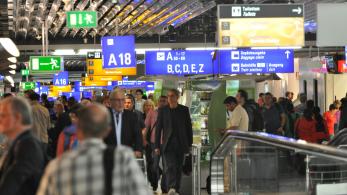
International Tourism to Reach Pre-Pandemic Levels in 2024

International Tourism to End 2023 Close to 90% of Pre-P...

International Tourism Swiftly Overcoming Pandemic Downturn

Tourism on Track for Full Recovery as New Data Shows St...

- ENTREPRENEURSHIP
Globalization’s Impact on Tourism

Globalization can be defined in several ways. One broad definition is:
“A complex web of social processes that intensify and expand worldwide economic, cultural, political and technological exchanges and connections.”
Globalization can also be simply described as the movement of goods, ideas, values, and people around the world. The term was first used in the early 1950s to recognize the increasing interdependence of economies and societies around the world. Globalization, however, has existed for centuries by way of evolving trade routes, including the slave trade, colonization, and immigration.
Today, we are divided into separate countries, each looking out for its own national self-interest. At the same time, other entities such as multinational corporations cross borders, which leads to global economic and political integration. Many benefits can result from global integration and interdependence, but we also need to heed its negative effects.
We shall explore the topic of globalization and how it relates to tourism, and then examines trends that have arisen as a result.
The Impact of Globalization on Tourism
We can assess the impact of globalization on tourism from a number of perspectives. Here, we will discuss five examples: global mobility and ease of travel; population and demographic trends; terrorism, safety, and security; increased awareness of new destinations; and poverty.
Global Mobility and Ease of Travel
The advances made in transportation that have enabled global mobility are particularly significant. Modern aircraft, cruise ships, trains, and other modes of transport allow people to move quickly and relatively cheaply. Aircraft such as the Boeing 787 Dreamliner have opened new routes by creating an aircraft capable of flying “long haul” distances with a larger passenger load. Fast trains, road systems, and even city bike rental programs enable people to move, tour, and explore the world. These changes have allowed more people to travel more often in less time.
Ease of travel has also helped to overcome the barriers of fear, frustration, and expense. For example, an international banking system allows access to money almost anywhere in the world. Multinational corporations, which provide flights, local transportation, and accommodation and food, have allowed for “one-stop shopping” for travel bookings. Handheld devices have also changed the nature of travel in terms of what travellers do and how they interact with a destination, making it easier to, for example, select a restaurant, navigate a big city, or translate a foreign language. As a result, there are fewer unexplored places in the world anymore.
Population and Demographic Trends
According to the United Nations Population Fund (2015), the world population reached 7 billion in 2011 and is projected to exceed 9 billion by 2050. The population continues to increase, but not uniformly across the world. Birth and death rates are vastly different between developed and developing nations (Population Reference Bureau, 2013). In the developed world, there are more older citizens (over 60 years old) than there are children (under 14). This ratio, which first tilted in favour of older people in the late 1990s, is increasing ( Business Insider, 2014). In contrast, in the developing world, this is not expected to occur until the middle of this century. This demographic divide is expected to widen between the richer and poorer countries of the world in the near future before possibly trending together in 40 or 50 years.
Other critical population trends affecting global development and tourism include the following (UNPF, 2015; World Tourism Organization, 2010; York, 2014):
- There are approximately 1.8 billion young people in the world (between 10 and 24 years), which is the largest that this group has ever been. They have tremendous opportunity for economic and social progress, resulting in a “youth dividend” for countries that embrace this demographic and their youthful vitality. This group is also travelling more than ever before in history.
- By the end of this century, approximately 40% of the world’s population is expected to be African. While birth rates are tending to fall around the world, they are still higher across Africa than in most other parts of the globe. This could result in a youth dividend or further exacerbate problems on the African continent.
- More people are migrating than ever before, with 232 million recent migrants compared with about 175 million in 2000. The top five destinations are the United States, the Russian Federation, Germany, Saudi Arabia, and the United Arab Emirates.
- More than half of the global population is urban, and the urbanization trend is expected to continue as people search for more jobs, more services, and more activities. Not everyone benefits equally though, as housing and other infrastructure struggles to keep up with the growing urban population.
To keep up with all of these changes in demographics, destinations will need to provide products and services to suit the older, culturally diverse, multi-generational travellers as well as the adventurous youth. Additionally, hiring and retaining staff will require a rethinking of human resource policies and procedures, compensation, and other aspects for the changing population of employees.
Terrorism, Safety, and Security
Terrorist attacks and political unrest globally have certainly disrupted tourism, but not halted it. The areas most affected, of course, are those where unrest has occurred and has been the focus of extensive media attention. A global terrorism index produced by the Vision of Humanity organization shows a fivefold increase in terrorist fatalities since 9/11 (MacAskill, 2014). The Islamic State (ISIS), Boko Haram, the Taliban, and al-Qaida are groups responsible for many of the 18,000 terrorism-related deaths in 2013, which represented an increase of 60% over the previous year.
While safety and security may not be the driving reasons for tourists selecting a particular destination, certainly a lack of safety and security often eliminates a location from travellers’ “wish lists.”
Safety and security for travellers is becoming more important as countries move to protect their citizens. Government agencies around the world produce advisories and warnings for their citizens to stay away from dangerous locations and political unrest.
Take a Closer Look: Travel Advisories
Travel advisories serve as warning systems for people from specific countries to avoid particular destinations because of actual or potential threats to citizens.The focus on safety and security has had several impacts on travellers. Most notably, security at most airports has been increased in an effort to protect people and planes (Flight Global, 2015). Screening procedures can take longer and some items are no longer allowed on board. Other security requirements, such as showing passports and providing fingerprints, have been implemented for entry into some countries. While all acts of terrorism cannot be stopped, the tourism industry is attempting to provide as much safety and security as it can.
Increased Awareness of New Destinations
Another influence of globalization on tourism is a greater awareness of destinations and the range of leisure activities, sites, and cultures to visit around the world. Generating knowledge of a destination is obviously a key first step in marketing a destination, and this is achieved by way of travel shows, films, blogs, and other forms of communication. The competition to attract visitors is fierce considering the sheer number of places available for travel; it can be easy to get lost in the noise of global competition.

This image of a child playing in the streets of Guatemala was captured by a visitor.
Globalization has contributed to increased demand for goods and services and overall economic growth, with the result of global poverty having decreased over the years. However, at the same time, the gap between the richest and poorest has expanded. A significant portion of the world’s population is simply unable to participate in, or benefit from, tourism. The economic gains from a tourism economy in a developing country such as Honduras versus a developed country such as Canada is unequal. Simply put, not everyone has the same opportunities to profit. Environmental costs are also unevenly distributed in the world, with poor countries lacking the resources to adapt to impacts (such as droughts, increased disease, soil erosion), and shouldering the majority of the repercussions of phenomena such as global warming.
Another way to analyze the interplay between tourism and globalization is to consider the reverse view: the impact of tourism on globalization.
Impact of Tourism on Globalization
In this section, we will look at tourism as a global force — for peace, for cultural homogenization, for commodifying cultures, and for shaping the way we see the world.
Tourism as a Force for Peace
In the 1980s, a popular hypothesis was that tourism supported global peace by allowing travellers to learn about other cultures and meet people from other nations, as well as offering benefits accrued from international business. Peace is an obvious requirement for tourism if the industry is to be robust and sustainable. However, to date, there is little empirical evidence to support the claim that tourism fosters peace, however attractive as the idea may be.
Tourism as Cultural Homogenizer

A “Patriotic Kick Line” on a cruise from Alaska to Vancouver
Nevertheless, tourism does offer the opportunity to teach people about how to respect other cultures. Some argue that globalization has a homogenizing effect on cultures, as Western values are spread through music, fashion, film, and food, rendering one culture indistinguishable from the next.
Some beliefs and values, such as embracing equality and diversity, or the need to protect children from harm, should be shared around the world. In the context of tourism and travel, these two issues are significant. For instance, companies need to ensure that their human resource practices are consistent and fair throughout the world. Exploiting children for sex is illegal, punishable in both the country visited and the home country of the tourist; some airlines and hotels are actively involved in supporting the prohibition of child sex tourism. Travellers are expected not to deface heritage sites or take rare or endangered natural or cultural objects as souvenirs. Such regulations speak to the universality of certain values and beliefs, which we all are required to follow as global citizens.
Tourism as Commodifier

Dancers at Germaine’s Luau near Honolulu, Hawaii
Another possible influence of tourism on globalization is the process of cultural commodification, which refers to the drive toward putting a monetary value on every aspect of culture, from buying a sculpture stolen from an ancient temple, to buying endangered objects such as ivory and coral. This trend results in the degradation or devaluing of cultural values and beliefs.
As one of the world’s largest industries, tourism impacts local, regional, and global economies. Resorts dot coastlines around the world and offer a welcome respite from colder climates to anyone wishing to experience a tropical beach, as well as the local culture and nature. While benefit comes to the community in the form of jobs, more often than not the larger share of the wealth leaks offshore. In response, local entrepreneurs and aid organizations have helped with initiatives that embrace local ownership in order for the wealth generated from tourism to stay in country . Community-based tourism, responsible tourism, and social entrepreneurship all aim to bring greater benefit to local communities.
Tourism As a World View
Tourism is also a major influence in how we see and understand the world. Keith Hollinshead (2006) refers to it as tourism world-making , or the way in which a place or culture is marketed and/or presented to tourists. Unlike local people, travellers experience a place for a few days, with limited knowledge of the culture and local way of life. Some visitors rely on available tourist information to make the most of the experience and to see the highlights. Others turn away and attempt to “go local” in search of the authentic experience with the belief that they can truly understand a place by avoiding the tourist sites.

An elephant is washed at Maesa Elehant Camp in Thailand in preparation for a show for visitors
If tourists stay in their resort in a given country, their only interaction with a local culture may be the staff at the hotel. In many cases, visitors experience a place in a fragmented, disconnected way, seeing only a portion of a place. How much can be gained from such short and transient experiences? This debate leads to one of the often discussed, if not hotly debated, topics in tourism, that of authenticity of experience . In 1976, Dean MacCannell released his book The Tourist: A New Theory of the Leisure Class , in which he argued that even those events that seem to be authentic are in some way staged for the visitor (Drumond, 2013).
Take a Closer Look: Cannibal Tours
In 1988, Dean O’Rourke shot a documentary profiling the experiences of jet-set travellers as they encountered locals in Papua New Guinea. The movie highlights the challenges that happen when visitors meet with “the other,” in that their expectations shape the behaviours of the locals. The movie features interviews with the locals as well as tourists. To watch the movie, visit https://www.youtube.com/watch?v=SQiDufdir_M
Environmental Trends
The United Nations Intergovernmental Panel on Climate Change has produced irrefutable evidence that climate change is human-made. We are already witnessing significant shifts in weather patterns, and climatic events such as tornadoes, drought, and flooding are occurring with greater frequency and impact. Yet dependence on a global economy fuelled by population growth and ever-increasing demand for consumer goods has led to significant debate as to how to respond to climate change, although action is clearly required.
Environmental Impacts
From a tourism and travel perspective, we have seen examples of how climate change is impacting tourism. In the transportation sector, drastic temperature changes from sudden ice thaws to heatwave conditions affect highways and runways, landslides close road systems, and rising sea levels threaten infrastructure such as airports and cruise ship wharves. In the accommodations sector, coastal storms impact resorts, summer water shortages put pressure on resort communities, and unpredictable snowfalls close ski resorts. Food and beverage operators are facing increased food costs as drought conditions make growing certain crops more and more expensive. In the recreation and entertainment sector, both natural and built attractions are threatened by unpredictable weather patterns. And travel services providers struggle to stay abreast of the effects of superstorms and polar vortexes.
The question here is the extent to which we can globally respond to these impacts by adapting and mitigating climate change to foster more resilient forms of economic growth, of which tourism is a part. Does this mean less air travel? Possibly. The challenge for tourism is that our economic interdependence requires far-reaching transportation routes, be it by air, sea, or land.
Economic Trends
Like most other industrial sectors, tourism is affected by global economic trends. Tourism was initially negatively impacted after the global financial crisis of 2007-2008, with international tourism arrivals dropping globally. However, the industry was quick to rebound, with the number of travellers increasing by 2010, surpassing the 1 billion mark in 2012 (UNWTO, 2014).
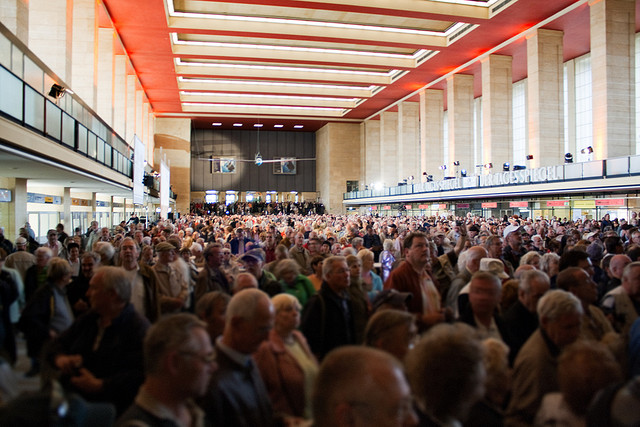
A crowd gathers at an airport that now serves as a museum
Economic uncertainties for the tourism industry have persisted, however, leading many industry insiders to monitor several economic trends, including collaborative consumption, shifts in emerging economies, and conscious consumerism.
Collaborative Consumption
Although the phenomenon of collaborative consumption , also known as the sharing economy, began before the global financial crisis, it gained strength as a result of it. Collaborative consumption is a blend of economy, technology, and a social movement where access to goods and skills is more important than ownership.
Airbnb was one of the first, and arguably most well known, examples of the tourism sharing marketplace, but several other companies have joined it, including Zipcar, Uber, and Couchsurfing. According to Nielsen, more than two-thirds of global respondents to a poll are interested in joining this revolution. The impacts on the tourism industry are still to be determined, although young travellers, budget-conscious families, and tourists seeking authentic local experiences seem to be drawn to these services. This is one trend that is likely to persist for some time into the future.
Emerging Economies
In 2001, a new acronym was introduced into the economic world — BRIC . This refers to the growing economies of Brazil, Russia, India, and China (Northam, 2014). These turbo-charged emerging economies were growing fast and looking to be the new powerhouses in global economic circles, even forming political and economic alliances. South Africa joined the group in 2010 and they became known as the BRICS.
With this growth came travellers looking for new destinations to visit. Outbound tourism development from China has been especially energetic, with numbers increasing from 58 million in 2010 to almost 100 million in 2013 (Flannery, 2014). But all has not gone well for these emerging economies and only China has maintained the pace of expansion. Other countries have since joined the race, creating another new acronym — MINTS — for the countries of Mexico, Indonesia, Nigeria, Turkey, and South Korea. Time will tell where new tourism growth and opportunities arise in the frenetic global economy, and who will be the next powerhouse to watch.
Conscious Consumerism
Conscious consumerism, or socially conscious consumer behaviour, is another economic trend with implications for the tourism industry. This term refers to consumers who are using their purchasing power to shape the world according to their values and beliefs, leading organizations to project a more ethical or responsible image.
This socially and environmentally responsible purchasing by many consumers (Freestone & McGoldrick, 2008) can direct travellers to more sustainable services and products. Destinations and businesses interested in pursuing this market need to be acutely aware of social and environmental issues, potentially ranging from organic produce and animal welfare to human rights (Shaw, Grehan, Shiu, Hassan, & Thomson, 2005). Some of the key principles for consideration by the tourism industry include an assumption that the traditional industrial model is not working and needs to be replaced, that awareness of the issues require a different mindset, and that change will come from the grassroots rather than from above (Pollack, 2012). This is a shift that has profitability and culture change firmly in its sights (Nielsen, 2014b).
Cultural and Social Trends
Defining culture as “a way of life” brings us to consider the implications of globalization as a defining influence in how we live and, therefore, who we are as individuals. Some argue that globalization has created a culture crisis, with values, beliefs, and identity all made secondary to economic interests and the pervasive and ever-growing nature of technology in our lives. Below are three cultural trends, followed by two societal trends.
The Tourist Experience as the Good Life
Some people are motivated to travel as a form of escape from the pressures of the globally interconnected world. Unplugging, where a hotel or resort offers no technological access in the form of Wi-Fi, television, or phones, is certainly one way to get people to slow down and, perhaps ironically, reconnect with themselves and loved ones. Biking, walking, small sailboat cruises, rural tourism, as well as the slow food movement are examples of experiences that simplify life in order to better appreciate and enjoy it.

Travel as a Time to Bond
Visiting friends and relatives, known in the industry simply as VFR , is a common and important subset of tourism demand worldwide. With their busy lives, people are seeking a moment, place, and activity to share with family or friends. In addition to the growing VFR trend is the increasing popularity of group travel, as exemplified in the sports tourism sector with sports clubs and teams who travel together, and associations that bring together people with shared interests in cuisine, walking, birdwatching, or other avocations.
Global Migration
Certainly a trend in globalization is the significant movement of people around the world. Implications for the tourism industry include a growing need to address the challenges of a multicultural workforce, including preconceptions related to customer service and management. It’s important for diverse teams to be able to work well together and to communicate well with visitors and guests.
For many years, technology has been strongly tied to tourism as the industry has looked to take advantage of developments and changes, opening destinations and providing new products and services. From the early days of Thomas Cook’s first recognized tours, offering train rides to the seaside, to the adoption of mobile technology today, tourism and hospitality has incorporated technological advances into all aspects of the industry. Two key technology trends affecting tourism and hospitality today and into the foreseeable future are mobile technology and access.
Wireless Ways
Mobile technology and wireless connections affect many aspects of the tourism industry on a global scale. Mobile technology allows people increased freedom to negotiate their day-to-day lives while staying connected. Online user-generated content, whether through social media (e.g., Facebook, Snapchat) or travel-rating sites (e.g., TripAdvisor, Zagat), is shaping where people go, where they stay and eat, and the types of activities they engage in.
Smartphones and applications (or apps) provide access to information and the ability for tourists to shape their travel en route, affecting tourism travel decisions and behaviours in a more fluid way than ever before. Travellers can book hotels instantly, searching for the best deals available. Mobile apps are replacing the hotel concierge by providing up-to-date information, along with maps and directions, for many of the desired activities at destinations.
Wireless technology has also given rise to location-based advertising, allowing product or service providers to market themselves when travellers are in the general area. Attraction alerts and special offers, often triggered by applications, provoke the user’s attention to elicit an immediate response.
Internet access has become a standard requirement for accommodations, ahead of other amenities such as in-house restaurants or pools. The importance of mobile technology and applications is expected to increase as travellers become more independent and less reliant on packaged options. Proponents of technology suggest that traditional ways of providing tourism and hospitality information will disappear as mobile technology becomes even more prevalent.
Advancing Access
Technological advances in transportation are affecting not only how people travel to and within destinations, but also the impacts that those forms of transportation are having on the environment. Transportation is one of the largest consumers of fossil fuels, and tourism is one of the biggest contributors to that consumption; consequently the tourism industry is taking steps to improve sustainability and reduce impacts. For example, newer planes, such as the Boeing 787 Dreamliner, use less fuel, generate less noise, and produce fewer emissions than previous models. Efforts are also being made to offer alternatives for tourism transportation (World Economic Forum, 2011), including increases in the number of electric cars available through rental agencies.
Transportation advances are also opening more access to the world for more people. In adjusted dollars, the cost of flights per mile has fallen by about 50% in the past 30 years (Thompson, 2013), allowing more people to travel. There are now even new vehicles for outer space that have created opportunities for people to begin to explore “the last frontier.” The cost of these flights is still prohibitively expensive for most people (approximately $20 million), but with continued advances in technology, this futuristic travel could eventually become commonplace.
___________________________________________________
About the Authors
This edited article was written by Geoffrey Bird and Eugene Thomlinson as part of their contribution on the “Introduction to Tourism & Hospitality in BC” of the B.C. Open Textbook Project. The B.C. Open Textbook project began in 2012 with the goal of making post-secondary education more accessible by reducing student cost through the use of openly licensed textbooks. This is an amazing initiative that is worthwhile to check out. Read more .

Related articles

Valuable Lessons From Spotify’s Business Model

- CALLUM CONNECTS
Elaine Zhou, Co-Founder of China Women Equipping Center

Aun Koh, Chairman & Chief Curator of Straits Clan

Renee Conklin, Founder of RC HR Consulting

Amar Dhillon, Founder & CEO at Homi SmartHome

- EDITOR'S PICK
Uber’s Future with Grab?
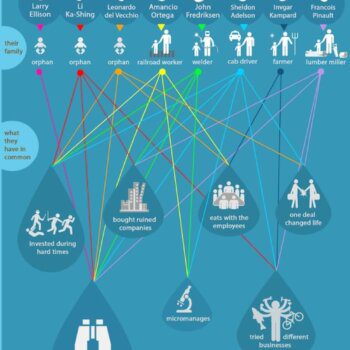
From Poor To Rich?

Leaders Don’t Boss
Recently published.

The Future Of Human Computing

The Real Mystery Of Sand Dunes

A.I. Is Consuming Excessive Water And It’s A Problem

How Art Can Help Us Rethink Sleep

The Roots Of “Wabi-Sabi”

Democratising Finance Through Artificial Intelligence

The Final Frontier Of Forensic Science

Rethinking Education

How China Is Transforming Its Economy Through Learning

Why You’re Not Seeing Success With Influencer Marketing

A New Philosophy of Business
Join our Newsletter
Get our monthly recap with the latest news, articles and resources.
Don't have an account? Register now!

Already have an account? Login here.
Browse Econ Literature
- Working papers
- Software components
- Book chapters
- JEL classification
More features
- Subscribe to new research
RePEc Biblio
Author registration.
- Economics Virtual Seminar Calendar NEW!

International Tourism In Globalization Conditions
- Author & abstract
- Related works & more
Corrections
(Doctoral School of Economic Sciences, Faculty of Economic Sciences, Oradea, Romania)
Suggested Citation
Download full text from publisher.
Follow serials, authors, keywords & more
Public profiles for Economics researchers
Various research rankings in Economics
RePEc Genealogy
Who was a student of whom, using RePEc
Curated articles & papers on economics topics
Upload your paper to be listed on RePEc and IDEAS
New papers by email
Subscribe to new additions to RePEc
EconAcademics
Blog aggregator for economics research
Cases of plagiarism in Economics
About RePEc
Initiative for open bibliographies in Economics
News about RePEc
Questions about IDEAS and RePEc
RePEc volunteers
Participating archives
Publishers indexing in RePEc
Privacy statement
Found an error or omission?
Opportunities to help RePEc
Get papers listed
Have your research listed on RePEc
Open a RePEc archive
Have your institution's/publisher's output listed on RePEc
Get RePEc data
Use data assembled by RePEc

Encyclopedia of Tourism pp 1–2 Cite as
Commercialization, tourism
- Alan Clarke 3
- Living reference work entry
- First Online: 01 January 2015
724 Accesses
Commercialization is the transformation of cultural forms, both tangible and intangible, through the application of business values and the investment of capital, which is often also seen as involving or creating a market economy. Commercialization is often defined tautologically as the introduction of the commercial to the production or development of new forms of business. This reveals more if the values underpinning the concept of the commercial are explored. It can be observed that people do increasingly live not only in a market economy but also in a market society – which means that the market and its categories of thought have come to dominate over more areas of everyday lives.
This is well demonstrated throughout the history of tourism as the origins of the hospitality relationships and the ability to travel have been transformed by the injection of capital and the recognition of the success criteria of capitalism. Commercialization also involves the introduction of...
This is a preview of subscription content, log in via an institution .
Clarke, A. 2013 Value Creation - Creating Values: Contradictions and Constraints in the Development of Religious Tourism. Pannon Management Review 2(1):49-70.
Google Scholar
Clarke, A. 2014 Culture and Authenticity in Food and Wine Events. In Food and Wine Events in Europe, A. Cavicchi and C. Santini, eds., pp.45-57. London: Routledge.
Kontogeorgopoulos, N., A. Churyen, and V. Duangsaeng 2015 Homestay Tourism and the Commercialization of Rural Home in Thailand. Asia Pacific Journal of Tourism Research 20:29-50.
Article Google Scholar
Papanicolaou, A. 2011 Authenticity and Commodification. In Controversies in Tourism, O. Moufakkir and P. Burns, eds., pp.41-53. Wallingford: CABI.
Ritzer, G., and Z. Atalay (eds.) 2010 Readings in Globalization. Chichester: Wiley.
Robinson, M. 1999 Cultural Conflicts in Tourism. In Tourism and Cultural Conflicts, M. Robinson and P. Boniface, eds., pp.1-32. Wallingford: CABI.
Swanson, K., and D. Timothy 2012 Souvenirs: Icons of Meaning, Commercialization and Commoditization. Tourism Management 33:489-499.
Download references
Author information
Authors and affiliations.
Faculty of Economics, University of Pannonia, Egyetem UTCA 10, 8200, Veszprém, Hungary
Alan Clarke
You can also search for this author in PubMed Google Scholar
Corresponding author
Correspondence to Alan Clarke .
Editor information
Editors and affiliations.
School of Hospitality Leadership, University of Wisconsin-Stout, Menomonie, Wisconsin, USA
Jafar Jafari
School of Hotel and Tourism Management, The Hong Kong Polytechnic University, Hong Kong, Hong Kong SAR
Honggen Xiao
Rights and permissions
Reprints and permissions
Copyright information
© 2015 Springer International Publishing Switzerland
About this entry
Cite this entry.
Clarke, A. (2015). Commercialization, tourism. In: Jafari, J., Xiao, H. (eds) Encyclopedia of Tourism. Springer, Cham. https://doi.org/10.1007/978-3-319-01669-6_436-1
Download citation
DOI : https://doi.org/10.1007/978-3-319-01669-6_436-1
Received : 18 May 2015
Accepted : 18 May 2015
Published : 23 September 2015
Publisher Name : Springer, Cham
Online ISBN : 978-3-319-01669-6
eBook Packages : Springer Reference Business and Management Reference Module Humanities and Social Sciences Reference Module Business, Economics and Social Sciences
- Publish with us
Policies and ethics
- Find a journal
- Track your research
What is globalisation? A simple explanation
What is globalisation? Well, globalisation is a hot topic and is often viewed as being somewhat controversial.
Commonly associated predominantly with trade and finance, the concept of globalisation is actually far more than this. Globalisation is the notion that we are all becoming more alike, or more ‘global’. Globalisation is increasingly present in almost every aspect of the world that we live in. From English schools in Taiwan, to smart phones in Ethiopia to fajitas in Australia , the world is becoming more and more connected and more and more alike.
In this article I will tell you a bit more about what is globalisation and how it impacts the world that we live in.
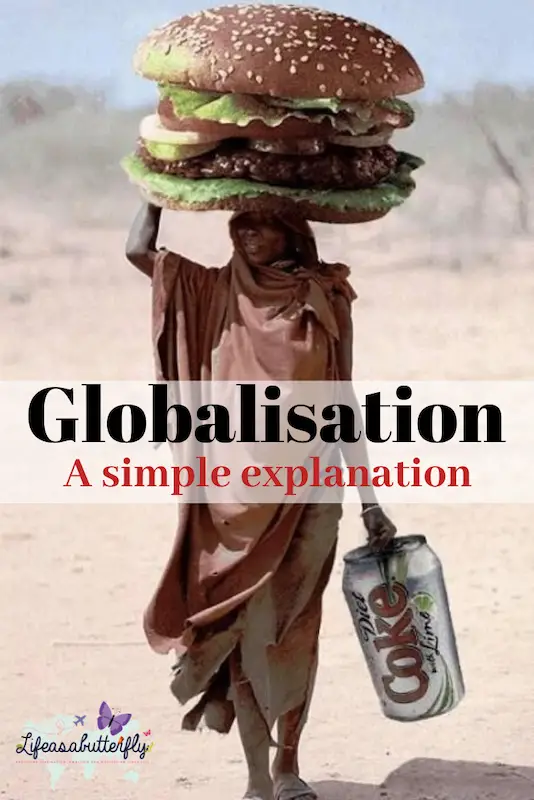
What is globalisation?
Globalisation is the way in which the world is becoming increasingly connected. We are losing our individuality and gaining a sense of ‘global being’, whereby we are more and more alike than ever before.
Globalisation typically spans five different areas. Globalisation occurs economically, technologically, politically, culturally and environmentally.
Definition of globalisation
The term globalisation has been commonly used since the 1980s. The term comes from the word globalise, which refers to the growth of international networks of economic systems.
There are several definitions that have been given to the term, which tend to be centred around either economics or sociology.
Sociologists have worked to conceptualise the term globalisation for years.
According to Martin Albrow and Elizabeth King, globalisation is’
‘All those processes by which the people of the world are incorporated into a single world society.’
Lechner and Boli (2012) define globalisation as;
‘More people across large distances becoming connected in more and different ways’.
In his text, The Consequences of Modernity, Anthony Giddens writes that;
‘Globalisation can be defined as the intensification of worldwide social relations which link distant localities in such a way that local happenings are shaped by events occurring many miles away and vice versa’.
Roland Robertson, professor of sociology at the University of Aberdeen and an early writer in the field, described globalisation as
‘The compression of the world and the intensification of the consciousness of the world as a whole.’
Robert Cox defines globalisation as;
‘The characteristics of the globalisation trend include the internationalising of production, the new international division of labour, new migratory movements from South to North, the new competitive environment that accelerates these processes, and the internationalising of the state […] making states into agencies of the globalising world. ‘
Most recently, theOrganisation for Economic Cooperation and Development (OECD) defines globalisation as;
“The geographic dispersion of industrial and service activities, for example research and development, sourcing of inputs, production and distribution, and the cross-border networking of companies, for example through joint ventures and the sharing of assets.”
Want to learn more about globalisation? Livesey’s book From Global To Local: The making of things and the end of globalisation is worth a read!
The three types of globalisation
If you’re asking yourself ‘what is globalisation?’, then you need to first think about the three types of globalisation.
Globalisation occurs in almost every walk of life. However, it can largely br broken down into the three pillars of globalisation:
Below, I will explain what each of these pillars means, both conceptually and in real terms- to you and me.
1- Political globalisation
Political globalisation refers to the way that the world is becoming increasingly connected politically.
Over the years, there have been a number of international organisations that have been formed. These are known as intergovernmental organisations (IGOs), whereby the organisation is comprised primarily of sovereign states (referred to as member states), or of other intergovernmental organisations.
The intention of said organisations is to provide governance, leadership and regulation on particular issues or areas of concern.
Whilst it is difficult for an international body to speculate what a nation can or cannot do, these organisations work closely with the political structures that are in place within the countries involved.
International organisations work to govern a number of global issues such as:
- Climate change
- Conflict and war
- Poverty reduction
- Environmental conservation
- Economic regulation
IGOs operate a top-down process and range from large global organisations to organisations which operate in specific parts of the world. Examples of political organisations include:
- World Trade Organisation (WTO)
- United Nations (UN)
- World Tourism Organisation (WTO)
- European Union (EU)
- Association of Southeast Asian Nations (ASEAN)
The relationship between globalisation and politics is covered at length in Baylis’s text The Globalization of World Politics: An Introduction to International Relations . If you’re studying the concept of globalisation for an essay or exam, I would recommend you take a look at his book!
2- Social globalisation
Social globalisation is the way in which societies adapt their behaviours to become more like each other.
There are a number of things that have influenced the occurrence of social globalisation. This includes:
- Internationally popular films, books and TV series such as Harry Potter or Frozen
- Technological developments which have facilitated access to worldwide media, such as Netflix, Amazon and IPTV
- Increased levels of tourism, facilitating the mixing of cultures
- An increased desire by tourists to travel somewhere different, ‘exotic’ and unfamiliar
- The growth of the sharing economy , slow tourism and cultural tourism
- Internationally popular football teams, such as Manchester United
Social globalisation is often evidenced in a number of different ways, which includes:
- The foods we eat- think fajitas in Australia or sushi in Brazil
- The language we speak- think English in China or Spanish in the USA
- The clothes we wear- think Manchester United football top worn by a young boy living in a rural Gambian village
- The music we listen to- think Jamaican reggae in France
Globalisation is often seen as the reason for cultural change, in which ever way this might be.
3- Economic globalisation
Economic globalisation refers to the increased interconnectedness of global economies through trade and the exchange of resources.
There are very few economies which are self-sufficient nowadays. The world is connected through trade and resource exchange more than ever before. The UK, for example, gets their oil from The Middle East. They get their coffee beans from South America . They get their lamb from New Zealand. Their cars are made in Germany.

The world has become one large global economy, demonstrated through a complex system of interconnected trade networks.
This was clearly evidenced during the global recession in 2007, when the collapse of the banks in the USA resulted in hardships being created throughout the world.
In some parts of the world, people are rejected this ‘connectedness’, arguing that policies, processes and practices do not reflect their individual needs and requirements. This is evidenced, for example through BREXIT, in the United Kingdom.
When did globalisation begin?
If you truly want to understand what is globalisation, you need to look at its roots. Where did it begin? How has it evolved?
The concept of globalisation has been around since people began to travel, although it hasn’t always been referred to using this term.
The development of globalisation throughout the years has been characterised as having four distinct phases. These phases are:
- The early voyages of exploration and colonisation
- The age of transnational integration
- Political and economic land scale
- The modern age of globalisation
Read more: Everything you need to know about the sharing economy
What is globalisation? Phase 1
The first phase of globalisation was seen to have started in the late 1400s, lasting until about 1800. During this time, explorers, the most notable being Christopher Colombus, began to travel the world, visiting unchartered territories and mixing with unknown peoples and cultures.
During this era there were many fights for land and colonisations began to occur. The English and Spanish were particularly successful in colonising many parts of the world.
This mixing of peoples and cultures saw the beginning of globalisation, whereby international trade began to become commonplace, economies began to work together and societies began too adapt and change in response to this new world.
Top tip: You can learn more about the phases of globalisation in this text! The New Silk Roads: The Present and Future of the World
What is globalisation? Phase 2
Between the years of 1800 and 1940 we saw the age of transnational integration.
During this time, many parts of the Western world were experiencing an industrial revolution. Advances in technology, transport and an increasingly liberalised environment saw rise to increased integration across boarders.
Many economies were linked through trade and many businesses were expanded to an international level.
This did not last, however. World War One and World War Two saw a decline in the growth of globalisation, with much trade and international travel being frozen.
There was also the catastrophic event of the Great Depression, which also had a considerable influence on the slow growth of globalisation.
What is globalisation? Phase 3
Between the years of 1950-1980 there was a steep incline in globalisation due to new freedoms surrounding the ability to trade internationally.
The General Agreement on Tariffs and Trade (GATT) saw rise to many newfound businesses or business expansions, given that it eliminated many trade barriers such as tariffs or quotas.
What is globalisation? Phase 4
The forth phase of globalisation is the modern age.
The modern age of globalisation spans 1980-present and represents significant growth and development in terms of globalisation throughout the world.
Telecommunications have had remarkable impact. From the first mobile phones to blackberries, smart phones and laptops. We can now easily chat with our counterparts on the other side of the world.
Transport developments has also had significant impact on the growth of globalisation. Air travel is now faster and more efficient. Many places around the world have developed airports, ports and roads, meaning that they are now more accessible than they once were. Travel costs are lower and making travel arrangements has never been easier.
World trade was further promoted through the formation of the World Trade Organisation (WTO), who established a number of legal bases in the trades between countries.
Known as globalisation 4.0, the world that we live in today is quite different from the world that our great grandparents occupied.
The digital economy, in its infancy during the third wave of globalisation, is now becoming a force to reckon with through e-commerce and digital services. Advances in technology are only making it easier for us to work together in a global scale and for the world to become ever more globalised.
There are some great texts out there that explore what the future holds in terms of globalisation. I can recommend Michael O’Sullivan’s book The Levelling: What’s Next After Globalization .
Importance of globalisation
When asking the question ‘what is globalisation?’, it is important to also understand why globalisation is important.
Globalisation is effectively the result of freedom to move goods, services and people across the world. Some refer to it as ‘opening up the economy on a global scale’. Globalisation is the result of an increasing interconnectedness and integration of the policies, economies and societies of the world.
The presence of globalisation can enable countries to liberalise their import protocols and welcome foreign investment into sectors that are the mainstays of their economy. In simple terms, this means that countries are able to do what they are good at or offer what they do best on a multinational level.
In addition to this, globalisation means that countries often liberalise their visa rules and procedures so as to permit the free flow of people from country to country. This is represented no better than in the European Union, whereby freedom of movement is a core product of the EU.
At the heart of it, globalisation is grounded in the theory of comparative advantage, meaning that countries that are good at producing a particular good are better off exporting it to countries that are less efficient at producing that good. Likewise, the latter country can then export the goods that it produces in an efficient manner to the former country which might be deficient in the same. The underlying principle here is that not all countries are good at everything and can operate more effectively if they cooperate and conjoin forces with other countries in ways that matter to them.
Lastly, the notion of globalisation means that countries of the world subscribe to the rules and procedures of the WTO and other relevant IGOs, resulting in a more consistent global operation.
Read more: The economic impacts of tourism
Characteristics of globalisation
When attempting to understand what is globalisation, it is helpful to be familiar with the characteristics. There are 10 dominant characteristics of globalisation. These are as follows:
- Greater trade in goods and services both between nations and within regions
- An increase in transfers of capital including the expansion of foreign direct investment (FDI) by trans-national companies (TNCs) and the rising influence of sovereign wealth funds
- The development of global brands that serve markets in higher and lower income countries
- Spatial division of labour– for example out-sourcing and off shoring of production and support services as production supply-chains has become more international. As an example, the iPhone is part of a complicated global supply chain. The product was conceived and designed in Silicon Valley; the software was enhanced by software engineers working in India . Most iPhones are assembled / manufactured in China and Taiwan by TNCs such as FoxConn
- High levels of labour migration within and between countries
- New nations joining the world trading system. China and India joined the WTO in 1991, Russia joined the WTO in 2012
- A fast changing shift in the balance of economic and financial power from developed to emerging economies and markets – i.e. a change in the centre of gravity in the world economy
- Increasing spending on investment, innovation and infrastructure across large parts of the world
- Globalisation is a process of making the world economy more inter-dependent
- Many of the industrializing countries are winning a rising share of world trade and their economies are growing faster than in richer developed nations especially after the global financial crisis (GFC)
Is globalisation good or bad?
For many people, when they hear of the term globalisation, their fist question is ‘what is globalisation?’. Their second question is ‘is globalisation good or bad?’.
More often than not, globalisation is spoken about with negative connotations. Whilst there are indeed many negative aspects to globalisation, there are also a number of positive elements too.
Below I have listed the major advantages of globalisation along with the negative effects of globalisation.
Advantages of globalisation
Many people who support the notion of globalisation will argue that is can make the world that we live in a better place.
Here are some of the arguments made, demonstrating the advantages of globalisation:
- Free trade reduces restrictive barriers such as tariffs, taxes and subsidies
- Globalisation creates jobs and makes businesses more competitive, which subsequently drives down prices for consumers
- Globalisation provides opportunities for poor countries to gain foreign capital and develop their economy
- Globalisation encourages the spread of democracy, which enhances human rights across the world
- There is now a worldwide market for companies and consumers who have access to products of different countries
- Globalisation encourages political decisions to be made that take the whole world into consideration, as opposed to particular areas or regions
- Globalisation encourages information sharing across countries
- Globalisation encourages cultural education
- Socially we have become more open and tolerant towards each other and people who live in the other part of the world
- Many people see fast and efficient travel, mass communications and quick dissemination of information through the Internet as benefits of globalisation
- Labour can move between nations, encouraging people to enhance skills and filling job shortages
- Transnational companies that conduct operations in other countries bring enhanced employment prospects to the area
- Globalisation has encouraged a range of free trade agreements to be established such as the North American Free Trade Agreement (NAFTA) and Trans-Pacific Partnership (TPP).

Negative effects of globalisation
Many people complain about the negative effects of globalisation. Here are some of the common remarks:
- Globalisation makes the rich richer (manager, owners, investors) and the poor poorer (grass roots workers)
- Free trade is often not entirely ‘free’ and many countries have high value added taxes (VATs)
- Developed countries suffer when jobs are lost to lower cost countries
- Many experience job instability or insecurity, with threats made to relocate positions to cost saving countries
- Large multi-national corporations have the ability to exploit tax havens in other countries to avoid paying taxes
- Many multinational corporations (MNCs) are accused of social injustice, unfair working conditions (including slave labor wages, living and working conditions), as well as lack of concern for environment, mismanagement of natural resources, and ecological damage
- MNCs are increasingly influencing political decisions because of their increased size and subsequent power
- Building products overseas puts our technologies at risk of being copied or stolen by the host country
- It is believed by some that increased movement of people will result in the spread of diseases around the globe
- Many organisations are ignoring safety standards and allowing the exploitation of workers to occur
Dani Rodrik has some fascinating and worthy arguments against the cause of globalisation in his brilliant text The Globalization Paradox: Why Global Markets, States, and Democracy Can’t Coexist .
Globalisation: To conclude
As you can see, globalisation is a hot subject right now. Criticised by many, the new interconnected world that we live in is shaped by the political, economic and social interactions that we have across the globe.
But what is the future of globalisation? What are your thoughts on the subject? What is globalisation to you? Leave your comments below!
Further reading on globalisation
There are some fantastic texts available if you want to learn more. Some of these are formal, academic-based texts and others are more of a weekend read with a cup of coffee. Here are some of my recommendations:
- The Levelling: What’s Next After Globalization – A brilliant analysis of the transition in world economics, finance, and power as the era of globalization ends and gives way to new power centers and institutions.
- The Globalization Paradox: Why Global Markets, States, and Democracy Can’t Coexist – An argument of the fundamental ‘trilemma’: that we cannot simultaneously pursue democracy, national self-determination, and economic globalization.
- From Global To Local: The making of things and the end of globalisation – s book that explores the making of this new world economic order, revealing the processes that lie behind it and showing how no one will be left untouched by its arrival.
- The Globalization of World Politics: An Introduction to International Relations – the bestselling introduction to international relations, offering the most comprehensive coverage of the key theories and global issues in world politics.
- The New Silk Roads: The Present and Future of the World – This book asks you to re-examine who you are and where you stand in the world, illuminating the themes on which all our lives and livelihoods depend.
What is globalisation? Have I answered your question?

IMAGES
VIDEO
COMMENTS
Another influence of globalization on tourism is a greater awareness of destinations and the range of leisure activities, sites, and cultures to visit around the world. Generating knowledge of a destination is obviously a key first step in marketing a destination, and this is achieved by way of travel shows, films, social media, and other forms ...
Globalization and tourism are very dependent on each other. Today, thanks to globalization, people from across the world can easily exchange ideas and values whether they are political, environmental, technological, cultural, or economic settings. Consequently, this exchange has enabled the circulation of massive knowledge amongst the people of ...
Tourism has long been claimed as a crucial force shaping globalization, while in turn the developments of the tourism sector are under the influences of growing interdependence across the world. As globalization proceeds, destination countries have become more and more susceptible to local and global events.
Another influence of globalization on tourism is a greater awareness of destinations and the range of leisure activities, sites, and cultures to visit around the world. Generating knowledge of a destination is obviously a key first step in marketing a destination, and this is achieved by way of travel shows, films, social media, and other forms ...
Tourism rose to the forefront of the global agenda in 2020, due to the devastating impact of COVID-19. Recovery will be driven by technology and innovation - specifically seamless travel solutions, but it will be long, uneven and slow. Success hinges on international coordination and collaboration across the public and private sectors.
Globalization in tourism is an important area of promise and of concern. This paper first highlights the main drivers of globalization, distinguishing between economic, technological, social, demographic, environmental and political drivers. It then addresses several of the important effects of globalization in the context of tourism.
Tourism has again been identified as a key driver of economic recovery and growth in a new report by the International Monetary Fund (IMF). With UNWTO data pointing to a return to 95% of pre-pandemic tourist numbers by the end of the year in the best case scenario, the IMF report outlines the positive impact the sector's rapid recovery will ...
Globalization refers to the spread of people, ideas, capital, goods, commodities, services, and so on transnationally across the globe. Enabled variously by advances in transport and information technology, the liberalization of economies and societies, as well as a new world political order, globalization and its effects have been extensively debated since the late 1980s.
Globalization in tourism is an important area of promise and of concern. This paper first highlights the main drivers of globalization, distinguishing between economic, technological, social ...
The Impact of Globalization on Tourism. We can assess the impact of globalization on tourism from a number of perspectives. Here, we will discuss five examples: global mobility and ease of travel; population and demographic trends; terrorism, safety, and security; increased awareness of new destinations; and poverty.
Tourism globalization leads to cultural exchanges, social interaction, exposure to local cultural traditions. At the same time, this phenomenon, helped by the economic policies also changes the profile of the tourist. Today's tourists are increasingly turning to global destinations, which many of them book online; they expect the vacation to be ...
Furthermore, an increase in tourism-related activities, globalization, and economic production has the potential to damage the quality of the environment. To this end, given the study results, there is a need to pursue green tourism which can reduce environmental degradation and destruction of land caused by multiple tourism-related ...
The interrelation between globalization and tourism is worth thinking about as it is an important element of the social activity and, at the same time, one of the main branches of economy. From the point of view of tourism, globalization is defined as a process that unites people all over the world, minimizing the ...
Curiosity for the different and marginal develops, and is economically exploited, as a side-effect of globalization. An increasing (though still minority) part of it is directed towards what visitors perceive as peripheries of the world.
Globalization has also supported tourism with enormous ramifications and encouraged it to become a major economic force (Razzaq et al., Citation 2021b). However, globalization leads to the high consumption of nonrenewable energy resources (Pata, Citation 2021 ) and provides the platform for progressing to pollution-intensive industries.
Economic globalization, the primary mechanism of globalization, has driven the flourishing of international tourism. However, little research has empirically revealed how it affects international tourism from a structural perspective.
These studies find that tourism in a country increases with increased globalization. Peric (2005), in particular, argues that with increased globalization, there is improvement in computerized ...
The processes of globalization refer to more than the spread of an economic model as it is also a cultural and discursive force in the development of tourism. However, there have been objections to the homogeneity implied in this process and there have been calls to introduce and retain elements of the local in the process known as ...
Globalisation is effectively the result of freedom to move goods, services and people across the world. Some refer to it as 'opening up the economy on a global scale'. Globalisation is the result of an increasing interconnectedness and integration of the policies, economies and societies of the world.
The globalization process, which causes the interdependence of world economies, is identified mainly in the economic and social area. Analysing statistical data on tourism, it can be stated that globalization positively influences the shaping and development of the tourism economy. The process itself, taking into account the capital links of the tourism services markets, is sensitive to crisis ...
The globalization process, which causes the interdependence of world economies, is identified mainly. in the economic and s ocial area. Analysing statistical data on tourism, it can be stated that ...
Scholars currently debate whether tourism is a force of standardization that eradicates local cultures and traditions ... in New Orleans to explain the connections between global forces and local actions in the development of urban tourism. I argue that the globalization and localization of Mardi Gras are occurring simultaneously with the ...
Tourism, the act and process of spending time away from home in pursuit of recreation, relaxation, and pleasure, while making use of the commercial provision of services. It is a product of modern social arrangements, beginning in western Europe in the 17th century, although it has antecedents in Classical antiquity.